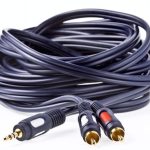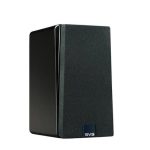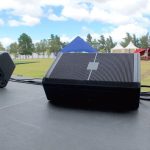Sometimes, sound problems may occur when setting up your PA speakers or even during a live performance. If your speakers are not giving the best sound output, then something is definitely wrong and your audience won’t get the best sound experience. You can avoid such problems by doing a sound test when setting up for a live performance and fix any problems. With that said, here’s how you can determine whether your PA speakers are giving the best sound output or not.
Are speaker wire polarities connected correctly?
If your PA speakers are giving perfect sound output, then you should hear decent bass, especially when playing heavy bass music. However, if there’s little or no bass, then something is definitely wrong somewhere. In most cases, bass response is affected when there is a reversal in speaker wire polarity.
Basically, bass is reproduced when the woofer driver moves a lot of air around it. In case the polarities are reversed, the speaker will attempt to reproduce signals that are out of phase. In this case, the woofer driver will move inward rather than outward. Consequently, bass will be inaudible and your audience will miss out on important bass notes. You can try to fix this problem by swapping the speaker wire polarities.
Is the stereo Imaging accurate?
If there’s accuracy in stereo imaging when setting up your PA speakers, you’ll have a seamless soundstage. The best sound output is achieved when there is tonal accuracy such that all the drivers in the sound system play seamlessly with each other. In perfect stereo imaging, the audio coming from a performer or instruments should appear like they are coming from the performer or instruments and not from the speakers.
Without accuracy in stereo imaging, the soundstage will sound distorted and the location of instruments and voices will be muddied together. Speaker placement determines the accuracy of sound imaging. If you’re setting up PA speakers in a room, they shouldn’t be either too close or too far away from the front wall. Accurate sound imaging is especially important if you’re using PA speakers for music production.
Phase cancellation issues
If you’re setting up PA speakers in a room for a live performance or speech, the room will interact with sound waves in a good or bad way. If the speakers are placed close to the wall, the sound coming from the speakers will be reflected by the wall. Consequently, the reflected sound waves will arrive to the ears of your audience when they’re already out of phase, leading to cancellation, echoes, and poor sound quality. You can ensure your audience gets the best sound experience by positioning the speakers in such a way that they direct sound towards the middle of the room and away from reflective surfaces.
Is there noise resulting from microphone feedback?
Microphone feedback is an issue where the speakers reproduce voice from the microphone, and the microphone picks up the same sound from the speakers, leading to a screeching noise. The noise is disturbing to the ears and lowers the overall quality of sound output. When microphones are too close to the front area of the speakers, there will be higher chances of microphone feedback.
If you want your PA speakers to give the best sound output, then the microphones are placed behind the speakers. Also, ensure the distance between the speakers and the microphones is as wide as possible. To add to that, anyone using a wireless microphone should try as much as possible not to stand in front of the PA speakers.
It’s also advisable to avoid using mics that pick sound from all directions. The best mics are the ones that reject sound from the sides and back. That way, the original sound from the mic remains louder than the noise being picked up from the speakers.
Proper PA Speaker Mounting
If you’ll be mounting PA speakers on tripod stands, ensure their height is adjusted properly for your audience to enjoy the best sound output. The height of mounted speakers should be slightly above the height of the audience. That way, the speakers will offer a wider and better sound coverage throughout the venue. Also, the speakers should be tightened properly to ensure they don’t rotate around the tripod stands.
The height of the mounted speakers is especially important with respect to high frequencies. High frequencies are highly directional. Thus, if your audience can see the location of the speakers that have tweeters, then they’re most likely to hear high frequencies clearly. As for low frequencies, they’re less directional and can be heard even when the bass drivers are placed on the floor.
If you’re working with two PA speakers in a venue, you can enhance sound coverage by placing one of the speakers on the right side of the stage and the other speaker on the left side of the stage. Then angle the speakers in such a way that they’re directing sound toward the middle area, near the farthest wall of the venue. If you have a third PA speaker, place it in the middle of the stage in such a way that it directs sound toward the middle area of the opposite side of the venue. That way, the audience in the front, middle, and back of the venue will enjoy the best sound output.
Are you getting clear Sound or are the speakers distorting and sounding noisy?
The best sound output is when the lows, midrange, and highs are all coming out clearly. However, if there’s some form of distortion or noise, then your audience won’t get the best listening experience. Distortion occurs when the original audio signal changes unexpectedly into something else. On the other hand, noise occurs when an unwanted external signal is added to the original audio signal.
Public address speakers are designed to safely handle a certain volume level. Pushing the speakers beyond their limit will cause distortion or even damage the drivers. You can prevent distortion by maintaining the volume level within what the speakers can handle. On the other hand, noise often occurs when power cables run alongside speaker cables. You can avoid noise by running power cables away from speaker cables.
Final Words
Experimenting with PA speaker placement and how they sound before a live event starts can be helpful in getting the best sound output. Also, ensure all speaker cables are connected the right way and all frequency ranges are audible upon doing a sound test. Additionally, remember to maintain the volume level within what the speakers can safely handle.
Michael Evanchuk is a San Francisco-based sound engineer with 20 years’ experience installing, troubleshooting, and repairing commercial, automotive, and household sound equipment. Evanchuk owns an auto stereo center, where he offers highly competitive car audio installation and repair services. He has written dozens of articles on different sound engineering topics, all of which have been published in leading journals, blogs, and websites.





